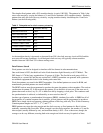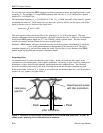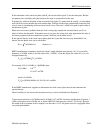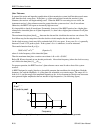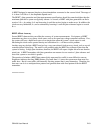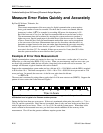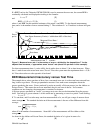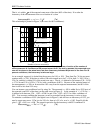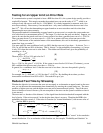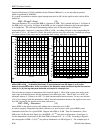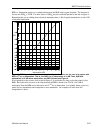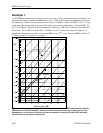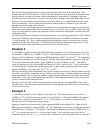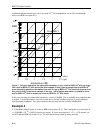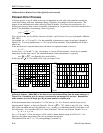
BERT Technical Articles
GB1400 User Manual B-35
Testing for an Upper Limit on Error Rate
If a communication system is required to have a BER less than 10
–9
, the system design usually provides a
couple dB of margin. This margin can make the nominal error rate on the order of 10
–12
, which is an
average of only one error a week for f
b
= 1.544 Mbit/s! It is clearly impractical to measure such a low
error rate accurately. But accuracy is not needed here––only some confidence that the error rate is less
than 10
–9
. We will see that determining an upper bound on an error rate takes much less time than
determining the error rate accurately.
The proposed method for determining an upper bound on an error rate is to require the system under test
to be error-free for a measurement period T. The longer T is, the lower the error rate bound. Suppose you
want to be sure that the actual error rate of some system is less than a specified error rate of r = 5.56 / hr.
Then you must choose T so an error rate of r = 5.56 / hr or greater will have at least one error in the
period T. But because of the statistical nature of the measurement, this can't be absolutely guaranteed no
matter haw large you make T.
You must settle for some confidence level (say 90%) that the error rate is less than r. So choose T so r =
5.56 / hr will fail the test 90% of the time. That is, choose T so the probability of measuring n = 0 errors
is only 10% when the error rate is at the limit r. The sidebar on Poisson Errors gives the probability of
measuring n = 0 as
p(0) = e
–rT
. (8)
Then set p(0) = 0.10 or 10% and solve for T:
T
r
r
=
−
=
ln
(
.
)
.
0
10
2
3
. (9)
For r = 5.56 / hr, this gives T = 0.414 hr. If the system is error-free for 0.414 hour (25 minutes), you are
90% confident that the error rate is less than r = 5.56 / hr.
In general, for a confidence level C that the error rate is less than r, the error-free period is given by
T
C
r
=
−
−
ln
(
)
1
. (10)
For example, for C = 0.99 and r = 5.56 / hr, then T = 0.827 hr. By doubling the test time you have
increased the confidence from 90% to 99%. The tradeoff is up to you.
Reduced Test Time by Stressing
Whether the objective is to measure the error rate accurately or to determine an upper bound on the error
rate, you can decrease the measurement time dramatically by stressing the system under test. The stress
produces a higher error rate, and the higher error rate can be measured more quickly. Then if the error
rate as a function of stress is known, you can extrapolate to the error rate the system would have when it
is not stressed.
The error rate is a function of the distance S of the signal from the decision threshold compared with the
level of noise. If the noise exceeds S at the decision time, there is an error. Therefore the BER is the
probability the noise exceeds S. If the noise is Gaussian (or "normal distribution") with an rms value of
N
rms
, then the BER is given by
BER
cnorm
= =
= − = −
∞
− −
∞
−
∫ ∫
∫
1
2
1
2
1
1
2
1
05 05
05
0
2 2
2
N
e dx e dy
e dy S N
rms
S
x N y
S N
y
S N
rms
rms
rms
rms
π π
π
. / .
/
.
/
( / )
(11)
The second integral is the result of the substitution y = x / N
rms
. The function "cnorm" is the cumulative
normal distribution. For an evaluation of this function see, for example, "Probability and Statistics" in



